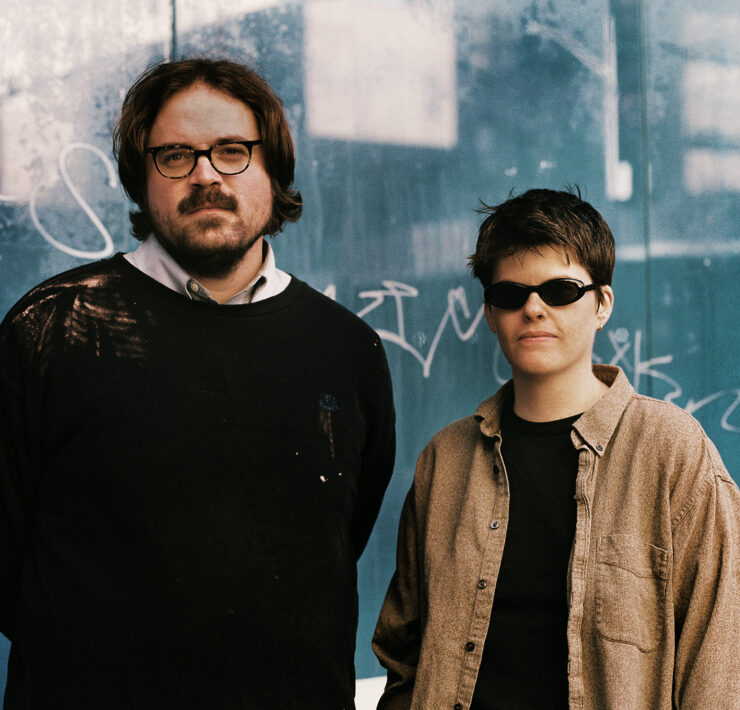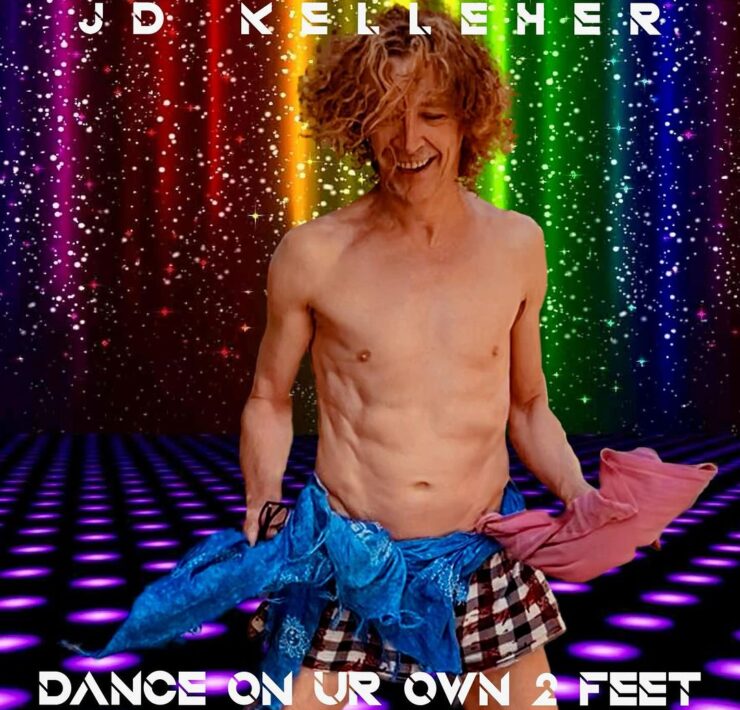Jake Shears’ Fiercely Queer ‘Last Man Dancing’ Touches Upon Several Subgenres of Dance Music

Imagine a world where all pop music was slow and melancholic. Imagine a timeline where pop never included queer elements which pulse with a neon glow. These two hypotheticals are nearly identical. Fortunately, dance music will never fade from our protean world.
Dance pop is an inherently queer genre, and its forebears of house and disco have always been at the forefront of LGBTQ cultural escapism. Ballroom culture, which originated in Black and Latino communities in New York around the mid-1960s, utilized danceable music as the backing for elegant expression. Gay singer and former Scissor Sisters frontman Jake Shears is greatly influenced by his queer forebears. Shears explores various subgenres of dance music on his new record, the aptly titled Last Man Dancing. Let’s dive into the magical beats and catchy melodies with a track-by-track rundown…
The record starts out with a bang in the pure pop nugget “Too Much Music.” While this track is more on the immediate side of the album’s sonic palette, it is far from basic. It is one of the biggest growers on the entire album, revealing itself as a truly memorable bop with repeated listens, and its slight element of cheesiness is fun and infectious. The following track, “Do the Television,” follows a similar path, with kitschy new wave synths and an almost sci-fi-esque lyrical turn. This one feels more like a movie soundtrack backing, but the beats never fail to make you want to get up and dance.
Track three is where the album really comes into its own, and Shears’ voice becomes an instrument of seduction. Kylie Minogue, a bona fide legend of dance-pop, guest stars on the track, and it feels like a match made in queer heaven! The song begins with some interesting synth shatters before Minogue’s gorgeous and iconic breathy soprano declares a siren-like “calling you to action!” The synth-pop banger then unfolds into a groovy earworm that effortlessly incorporates timeless disco elements. Shears’ voice has never been more alluring. This is not only where the album takes off, but “Voices” also contains the most indelible melody on the whole thing. The lyrics throughout the album feel simple, without any pretense or challenge, but they work perfectly with the consistently upbeat soundscapes.
Shears explores further dance stylings on the following three tracks. “I Used to Be in Love” is a fun, soaring dance pop track with house-inflected pre-choruses and piano riffs. The song’s bridge is woozy and infused with funk rock guitars, a welcome switch-up that somehow feels perfectly natural. “Really Big Deal” is another grower. A new wave/disco fusion with Hi-NRG synth pulses, this song feels like the most obviously queer expression on the album.
The campy chorus about being… well, a really big deal, feels fun and empowering, while the prominent harmonies and brief guitar solo feel like pure over-the-top queer fearlessness in audible form. The title track is another disco track but feels like the most traditional and explicitly ABBA-inspired of the whole bunch. It is an instant highlight, playing like a classic Saturday Night Fever-chiming dancefloor filler.
“8-Ball” is the only fully instrumental song on the album, and it escalates from funk grooviness to acid-house electrification to synthpop spiraling. It works as a decent interlude, but it feels a bit like it cannot make up its mind on where to go next. This track is where the album finds a bit of difficulty, as the disparity of dance stylings on it can occasionally undermine the boldness Shears’ is trying to bring to the forefront.
Elsewhere, the meshing of different dance eras feels more organic. Though I would not necessarily skip “8-Ball,” I cannot deny that it is somewhat out of place on the otherwise classic-sounding album. Fortunately, “8-Ball” sets the listener up for a smooth transition into the magnificent “Devil Came Down the Dance Floor,” with Amber Martin taking on a show-stopping lead vocal.
“Mess of Me” is another fun bop but does not stand out as effectively as other massive tunes on the album. The following track, “Doses,” is an 11th-hour—well, 10th if we’re being literal—spacy, electropop hymn crafted for the best nights out. Big Freedia, who ravishingly performed at Denver’s own Pride Fest the other week, is a force to be reckoned with as she takes the spotlight with her signature deep vocals. Her lyrics are repetitive, but her delivery is what makes “Doses” one of the record’s finest moments.
Shears chimes in on the last minute of the track with some falsetto harmonies, complementing Freedia’s commanding presence. Yet another flowing transition shoots Shears back into space about a minute and 45 seconds into “Radio Eyes,” which brings back a space-age element present in “Do the Television.” It is pure queer euphoria, which feels like the overarching theme of the album.
The closing statement “Diamonds Don’t Burn” is fittingly the most moving song on the album. Shears dials in some trippy keyboards while he takes on an affected, Bowiesque, seductive vocal. It is his second-best vocal performance on the album after the extraordinary “Voices.” “Diamonds Don’t Burn” sonically feels like a futuristic Bond theme, while the lyrics subtly touch on real-life personal issues (drug use, financial struggles, hypersexuality, anxiety, numbness, etc.) with an impassioned spoken word moment cutting through the epic soundscape. The production on the chorus feels redolent of Black Cherry-era Goldfrapp, and the whole song feels humanizing and empowering without being preachy. This is the perfect closer for the album, as it hypnotically draws the escapism to a close and incorporates many disparate subgenres into a shimmering beauty of a pop anthem.
The unapologetic queerness of the whole album feels so spot-on and essential for the cultural landscape of 2023. Disco music experienced a major resurgence beginning in 2020, at the dawn of the COVID era, with artists such as Minogue, Róisín Murphy, and Jessie Ware delivering fierce, sensual, timeless records. Jake Shears’ majestic Last Man Dancing shines brightly as another disco fusion album that plays almost like a greatest hits compilation.
Genres and textures: Dance-pop, acid house, disco, new wave, synthpop, space funk… Harmony-heavy, dancy, euphoric, queer, sexy, cosmopolitan…
Instant highlights: “Voices (feat. Kylie Minogue),” “I Used to Be in Love,” “Last Man Dancing,” “Doses (feat. Big Freedia),” “Diamonds Don’t Burn”
Let these grow on you: “Too Much Music,” “Really Big Deal,” “Devil Came Down the Dance Floor (feat. Amber Martin)”
Score: 8.6/10
Photo courtesy of Jake Shears’ Bandcamp page
What's Your Reaction?
Joe Agger is a recent graduate of the University of Colorado at Boulder and a singer/songwriter/multi-instrumentalist with a passion for all kinds of writing. He identifies as a cis bisexual man, and is a pop culture expert. He is a contributing writer for OUT FRONT.










